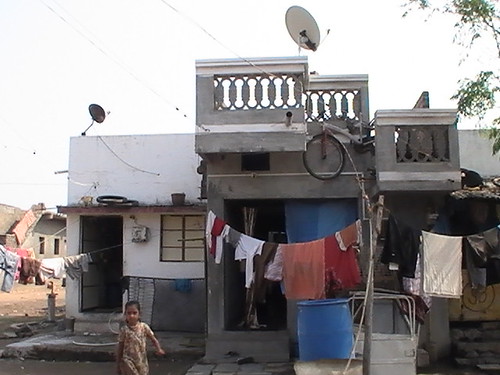By Kashif-ul-Huda, TwoCircles.net
TCN series on Gujarat: Part 6
Abandoned by the governments, forgotten by the community, this is a tale of two colonies of survivors of Gujarat genocide of 2002. A tale of struggles, challenges, opportunities, hopes, and despair.
These two colonies, not far from Godhra, were established by Muslim organizations to settle those who lost their homes or too afraid to go back to their villages. There are striking similarities and also interesting differences between these two colonies.
Video:
Colony in Halol has people from 26 different villages while most residents of the colony in Kalol come from one village.
In Halol, Masjid remains locked most days because of a dispute among different sects of Muslims. So right next door is a prayer room that also serves as maktab. In the colony, there is no provision of drainage so all filth remain in the lanes where kids roam around. You find women washing dishes outside their homes while on a distance you can see a huge water-tank that do not serve them, an apt symbol for the development in Gujarat that is ignoring Muslims.

Skyward-facing satellite dishes in Halol colony: a way to escape ground realities?
School established by Janvikas is the only school running in the colony. Though there are quite a few satellite dishes on rooftops school teachers say that not all parents are willing to pay school fees.
Colony in Kalol is a better organized, may be a reflection that most residents knew each other from before and they didn’t have to face same challenges as Halol colony. Also, residents of this colony seemed a bit better off and some evidence that they were able to get some work done by the local administration.
This colony also has a school run by Janvikas, I talked to school officials to find out the differences between the two colonies. In Kalol, parents are more involved in school activities, pay fees on time, and want best education for their children. Janvikas uses textbooks that are more inclusive and free from communal bias. They have also attempted to get students from other religion in these schools so that Muslim children do not grow up completely cut off from the larger society.
Both schools offer classes only upto fifth grade and herein lies the challenge of Gujarat, while boys are able to attend schools nearby, parents are reluctant to send girls outside the colony. Even after almost a decade since the genocide fear of security drives most decision about lives of Muslims in Gujarat.
Some parents do send their children to private schools nearby but when I talked to a few students I was surprised to learn that they don’t dream of becoming doctors or engineers but rather machinists, welders, fitters, or any job. A deathly peace envelops Gujarat where young ones do not even know how or what to dream.
Sabse khatarnak hota hai murda shanti se bhar jana
Na hona tarhap ka, sab kuchh sehan kar jana
Ghar se nikalna kaam par, aur
Kam se laut kar ghar aana
Sabse khatarnak hota hai
Hamaare sapno ka mar jaana
— Pash
Link:
http://www.janvikas.in
